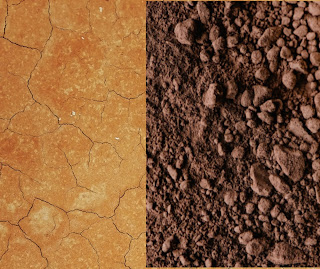Soil Rejuvenation
Soil is one of the most important parts of our ecosystem. If there wouldn't be any soil, there wouldn't be many life forms on Earth.
Soil, plants, animals, and other organisms are all interconnected for each other's health. Healthy soil is only possible if there is a healthy ecosystem.
Healthy soil is composed of weathered rock, organic matter, water, air, and organisms.
Organic material though makes only a 5 to 10 percent fraction of soil but is an important part of healthy soil. Organic matter is decomposed remains of plants, trees, and organisms in the soil.
Organic matter binds the soil into porous particles, which helps in the movement of water and air in the soil.
It helps in absorbing and storing water and nutrients in the soil. It is the food source for various microorganisms in the soil. It also
In the process of organic matter decomposition, the soil microorganisms break down the organic matter into humus and various nutrients. The humus helps in retaining water, carbon dioxide, and nitrogen in the soil. Humus changes the color of soil darker as it decomposes. These nutrients are then used by the plants to produce food.
Soil degradation is caused by pollution, natural calamities, deforestation, overgrazing, unsustainable agricultural practices, long term climatic changes. As per the United Nations, the world's top soil will become unproductive within 60 years, if the current rate of loss continues.
Thus it has become very important for soil rejuvenation, maintaining the right organic matter percentage in soil for a healthy ecosystem to thrive.
The organic matter can be increased by afforestation, growing perennial pasture, growing cereal crops, growing green manure crops, spreading manure, and using organic fertilizers minimize tillage and crop rotation.
Permaculture is a method of an agricultural system, which focuses on the natural way of practicing agriculture, maintaining the ecological system, and not strictly following systems of modern agriculture.
The method helps in reducing carbon footprint as it encourages zero waste. It encourages composting and the use of discharged food in soil for various nutrients.
The method encourages the use of native and perennial plants as it attracts the local insect population.
The plants used in this method don't attract the mosquito population.
The method uses a natural way of agricultural cultivation which helps in reducing pollution.
Thus to keep a healthy ecosystem and a sustainable development for all we would have to follow these practices for a better future.





Comments
Post a Comment